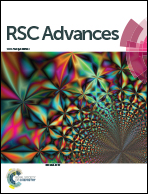Modulating the permeability of ferritin channels†
Abstract
Twenty four-mer ferritins are present in all kingdoms of life and play an essential role as iron storage proteins. The formation of a caged iron biomineral is driven by an enzymatic reaction occurring at ferroxidase centers in the central part of ferroxidase catalytically active subunits, where Fe2+ is the reaction substrate. For this purpose, Fe2+ needs to be translocated through the protein cage. Two different types of channels pierce the ferritin nanocage, in correspondence to C3 and C4 symmetry axes. The polarity across the channels controls the directional Fe2+ fluxes towards the ferroxidase centers. In vertebrate ferritins, the C3 channels have been identified as the entry ion channels coupled with the ferroxidase reaction. Here, we have prepared a series of variants of the ferritin nanocage to study the role of electrostatic residues inside the two types of channels in directioning Fe2+ substrates towards the catalytic ferroxidase sites and the inner biomineralization cavity. Interestingly, by changing the electrostatic properties of the residues at the inner edge of each channel, we can selectively activate/deactivate Fe2+ routes, modulating the rate of iron oxidation at the ferroxidase sites.


 Please wait while we load your content...
Please wait while we load your content...